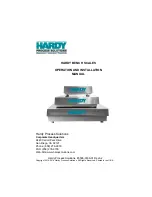
14
•
English
female
age
poor
good
very good
10 - 15
< 57
57.1 - 67
> 67
16 - 30
< 47
47.1 - 57
> 57
31 - 60
< 42
42.1 - 52
> 52
61 - 100
< 37
37.1 - 47
> 47
Body fat contains relatively little water. Therefore persons
with a high body fat percentage have body water percentages
below the recommended values. With endurance athletes,
however, the recommended values could be exceeded due to
low fat percentages and high muscle percentage. This scale is
unsuitable for measuring body water in order to draw medical
conclusions concerning age-related water retention, for
example. If necessary ask your physician.
The muscle percentage is normally within the following ranges:
age
male healthy
female healthy
10-99
> 40
> 34
Like the rest of our body, our bones are subject to the natural
development, degeneration and ageing processes. Bone
mass increases rapidly in childhood and reaches its maximum
between 30 and 40 years of age. Bone mass reduces slightly
with increasing age. You can reduce this degeneration
somewhat with healthy nutrition (particularly calcium and
vitamin D) and regular exercise. With appropriate muscle
building, you can also strengthen your bone structure. Note that
this scale will not show you the calcium content of your bones,
but will measure the weight of all bone constituents (organic
substances, inorganic substances and water).
The bone mass is normally within the following ranges:
male
female
weight
< 60
kg
60-75
kg
> 75
kg
< 45
kg
45-60
kg
> 60
kg
bonemass
2,5 kg
2,9 kg
3,2 kg
1,8 kg
2,2 kg
2,5 kg
Attention
: Please do not confuse bone mass with bone density.
Bone density can be determined only by means of a medical
examination (e.g. computer tomography, ultrasound). It is
therefore not possible to draw conclusions concerning changes
to the bones and bone hardness (e.g. osteoporosis) using this
scale.
Little influence can be exerted on bone mass, but it will vary
slightly within the influencing factors (weight, height, age,
gender).
tips
9
Remember that only long-term trends are important. Short-
term fluctuations in weight over a few days are usually the result
of a loss of fluid.
Important when measuring body fat/body water/muscle
percentage:
• If possible, always weighs yourself at the same time of day
(ideally in the morning), after going to the toilet, on an empty
stomach and without clothes to achieve comparable results.
• The measurement may only be carried out while barefoot
and it is helpful if the soles of your feet are slightly damp.
Completely dry soles can result in unsatisfactory results, as
they have insufficient conductivity.
• Stand still during the measurement.
• Wait several hours after unusually strenuous activity.
• Wait approx. 15 minutes after getting out of bed so that the
water in your body can be distributed.
• Remember that only long-term trends are important. Short-
term changes in weight within a few days are usually caused
by a loss of fluid. Body water plays an important role towards
our general wellbeing.
The measurement is not reliable for:
• Children under approx. 10 years of age;
• Professional sporters and bodybuilders;
• Pregnant women;
• Persons with fever, undergoing dialysis, with symptoms of
edema or osteoporosis;
• Persons taking cardiovascular medication.
• Persons taking vascodialating or vascoconstricting
medications;
• Persons with substantial anatomical deviations in the legs
relative to their total height (leg length considerably shorter
or longer than usual).
Содержание PW720ZW
Страница 2: ...2 ...















































